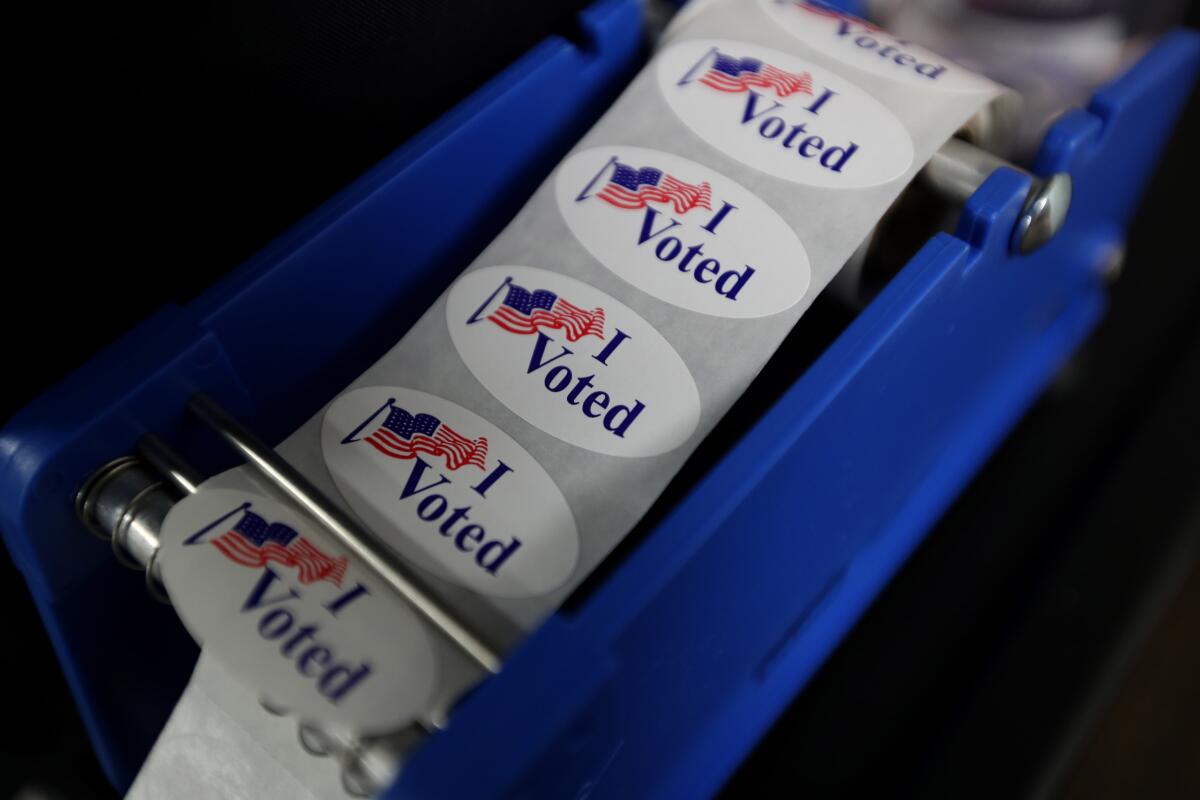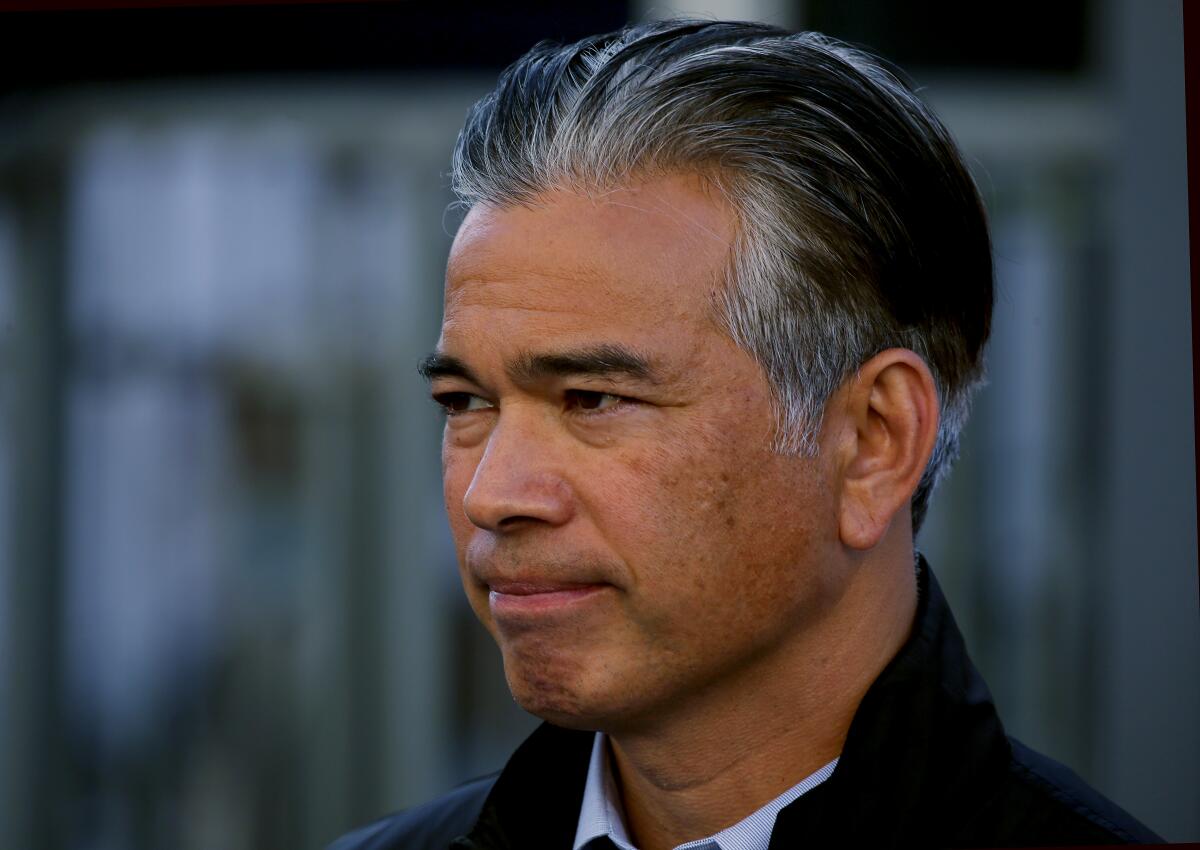California Politics: June’s ballot is set, but will voters show up?

Plans for California’s primary election are now firmly in place, as state officials certified the list of candidates for statewide, congressional and legislative races on Thursday — one of the last big steps before the first of more than 22 million ballots are mailed to voters no later than early May.
But how many of those ballots will actually be cast?
There’s often a strong correlation between high-profile races and voter turnout. It’s why presidential election cycles, for example, hold most of the records in California for voter participation.
But an early review of what’s in store for the June 7 statewide primary suggests the biggest races will feature only a few well-known candidates and a field largely comprising unknowns or newcomers. And a lack of marquee races could again result in an election in which the voters who show up aren’t representative of California’s diverse population.
For governor: 26 candidates, few with broad support
It’s hard not to draw the conclusion that the real race to replace Gov. Gavin Newsom might have been held last fall when several prominent candidates ran in the historic gubernatorial recall election.
While 10 of the candidates who were listed on the Sept. 14 recall ballot have chosen to run for a full four-year term as governor, none of last year’s best-known challengers opted to take a second shot at Newsom — likely viewing the Democratic governor’s resounding defeat of the recall and his $20-million campaign war chest as offering long odds for a different outcome in 2022.
(One of the best-known recall hopefuls, reality TV star Caitlyn Jenner, debuted Thursday night as a contributor on Fox News.)
In this election, the two most recognizable challengers are state Sen. Brian Dahle, a Lassen County Republican, and Michael Shellenberger, a Berkeley environmental and homelessness activist. Shellenberger is a former Democrat who’s now a “no party preference” candidate, one of seven unaffiliated contestants in the governor’s race. Three unheralded Democrats are challenging Newsom. Two candidates are members of the Green Party.
The largest subset of gubernatorial candidates is composed of Republicans — 13 in all, and more GOP hopefuls than in any California gubernatorial primary since at least 1990.

All eyes on the attorney general’s race
With the governor’s race mostly drawing a field of long-shot candidates, political watchers have turned their attention to the election for attorney general in which incumbent Atty. Gen. Rob Bonta is running for his first full term against four challengers, including outspoken Sacramento County Dist. Atty. Anne Marie Schubert.
Schubert is a former Republican, offering her a bit of separation from GOP challengers Eric Early and Nathan Hochman. One Green Party candidate, attorney Dan Kapelovitz, is also running.
But party identification is a powerful selling point for a lot of voters and loyal Republicans, even though they are outnumbered in the larger electorate, could coalesce behind one of their candidates and win the second spot on the November ballot alongside Bonta. If Schubert is to break through, she’ll need a hefty campaign war chest and possibly some additional support from independent groups that can replace the financial help usually offered by a candidate’s political party.
Bonta, meanwhile, is likely to spend the primary and general election seasons talking about crime. Almost all of his opponents will surely seek to paint the criminal justice reformer as too liberal for the job of top cop.
Low turnout, less diversity?
The last time that a majority of California voters cast ballots in a gubernatorial primary was 1982, when then-Atty. Gen. George Deukmejian won the GOP nomination for governor and Democrats selected then-Los Angeles Mayor Tom Bradley. (Deukmejian, of course, went on to narrowly beat Bradley in November.)
But since then, turnout for the state’s nonpresidential primaries has been anemic. Its lowest point was in 2014, when only 25% of registered voters cast a ballot in the primary that sent then-Gov. Jerry Brown and GOP challenger Neel Kashkari into a two-man general election showdown. In 2018, when Newsom and Republican John Cox won the top two spots, fewer than 38% of registered voters showed up.
Low turnout, researchers say, means an electorate that doesn’t really reflect California.
An analysis by USC’s Center for Inclusive Democracy of the 2020 presidential primary (in which less than 47% of registered voters cast ballots) found a significant underrepresentation of Latinos. While Latino adults comprised almost 31% of California’s eligible voters, they accounted for only 19% of the votes cast in the March 3, 2020 primary.
“Voters in California’s upcoming June primary are very likely to be older, wealthier and disproportionately white,” said Mindy Romero, director of the USC research group. “This small group of voters decides the makeup of the November ballot for everyone.”
The shortcomings of primary elections were the reason cited in 2012 when Brown signed a law moving all ballot initiatives to November elections. That may have helped ensure greater participation in making big decisions on public policy, but the problem with primaries remains.
Romero said the fewer times a voter casts a ballot, the fewer times political groups show up in future elections seeking support, a vicious cycle that perhaps only state and local elections officials can break.
“Greater outreach and resources are needed to more effectively reach voter groups who are less frequently contacted by campaigns,” she said.
Enjoying this newsletter? Consider subscribing to the Los Angeles Times
Your support helps us deliver the news that matters most. Become a subscriber.
California politics lightning round
— California extended its eviction moratorium until June 30 in an emergency bill lawmakers approved Thursday, giving government officials another three months to disburse rent relief payments.
— California’s Reparations Task Force voted Tuesday to define those who are eligible for reparations as descendants of African Americans enslaved in the U.S. or of free Black people living in the country before the end of the 19th century.
— One of the most far-reaching vaccine bills introduced in the Legislature this year will not move forward as planned, after the proposal to require all workers to be inoculated against COVID-19 was shelved.
— An estimated 1 million taxpayers in California will not receive their full refunds because they have outstanding parking tickets, court fees, unpaid tuition and other debts that the state will intercept.
— The first Latina to serve on the California Supreme Court was sworn in Monday as officials praised the historic elevation of appellate Judge Patricia Guerrero to the state’s highest court.
Stay in touch
Did someone forward you this? Sign up here to get California Politics in your inbox.
Until next time, send your comments, suggestions and news tips to [email protected].
Sign up for Essential California
The most important California stories and recommendations in your inbox every morning.
You may occasionally receive promotional content from the Los Angeles Times.




